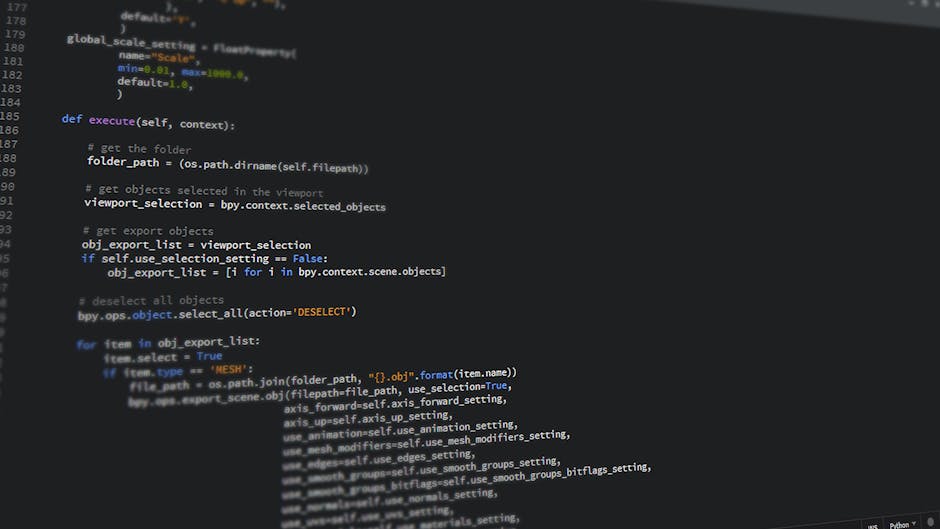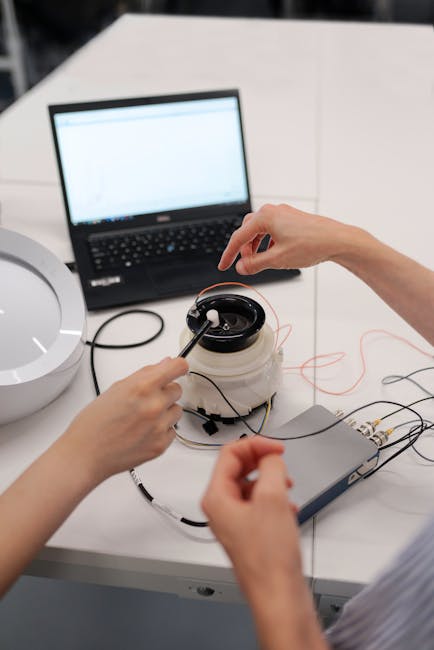Friendly Guide to Integration Testing: Purpose, Types, Techniques, and Tools - Related to techniques,, friendly, engineering, testing:, incubating
Friendly Guide to Integration Testing: Purpose, Types, Techniques, and Tools

Integration testing is a pivotal phase in the software development lifecycle.
Its primary goal is to validate that different software components, subsystems, or applications work cohesively to achieve the desired functionality and performance.
Verify Interactions Between Components: Ensures seamless communication between modules.
Ensures seamless communication between modules. Ensure Compatibility: Identifies compatibility issues across different environments.
Identifies compatibility issues across different environments. Detect Problems Early: Catches issues early, reducing costs and complexity later.
Catches issues early, reducing costs and complexity later. Improve System Reliability: Enhances overall system stability by resolving integration bugs.
Enhances overall system stability by resolving integration bugs. Boost Quality: Helps maintain high-quality standards by addressing issues before deployment.
Different types of integration testing can be applied based on the system's requirements:
Big-Bang Integration Testing: All components are integrated simultaneously and tested as a whole.
Best for systems with independent modules. Top-Down Integration Testing: Starts from the highest-level modules and moves down.
Useful when higher-level components are critical. Bottom-Up Integration Testing: Begins with lower-level modules, progressing upward.
Ideal when foundational components are complex. Sandwich/Hybrid Integration Testing: Combines both top-down and bottom-up approaches.
Suitable for complex systems with interdependent modules. Continuous Integration Testing: Continuous integration and testing during development.
Catches issues early and improves software quality.
Manual Integration Testing: Testers manually verify interactions, simulating real-life scenarios. Time-consuming but thorough for critical applications.
Automated Integration Testing: Utilizes tools like Selenium, Appium for continuous testing. Saves time and ensures consistent test coverage.
State Transition Testing: Validates behavior during state changes.
Validates behavior during state changes. Decision Table Testing: Tests complex business rules.
Tests complex business rules. Boundary Value Analysis: Focuses on edge case inputs.
Focuses on edge case inputs. All-Pairs Testing: Checks all possible input combinations.
Checks all possible input combinations. Cause and Effect Graph: Maps causes to effects for systematic testing.
Maps causes to effects for systematic testing. Equivalence Partitioning: Reduces test cases while covering all scenarios.
Reduces test cases while covering all scenarios. Error Guessing: Relies on tester intuition to identify potential issues.
Data Flow Testing: Examines data lifecycle within the application.
Examines data lifecycle within the application. Control Flow Testing: Ensures all code paths are executed.
Ensures all code paths are executed. Branch Coverage Testing: Validates both true/false conditions in the code.
Validates both true/false conditions in the code. Decision Coverage Testing: Tests all decision outcomes.
Combines Black Box and White Box techniques.
Example: Testing front-end to back-end data flow with partial knowledge of internal processes.
Early detection of high-level and low-level issues.
For complex systems with critical middle layers.
When quick feedback is needed through iterative testing.
Tools and Frameworks for Integration Testing.
JUnit: Java unit and integration testing.
Java unit and integration testing. Postman: API and web service integration testing.
API and web service integration testing. Selenium: Automated web application testing.
Automated web application testing. SoapUI: Automated SOAP and REST API testing.
Automated SOAP and REST API testing. Cucumber: BDD tool supporting integration testing.
BDD tool supporting integration testing. TestNG: Java testing framework for unit and integration tests.
Java testing framework for unit and integration tests. PyTest: Python framework for comprehensive integration testing.
Python framework for comprehensive integration testing. Katalon Studio: Automation tool for web, API, and mobile apps.
Automation tool for web, API, and mobile apps. Apache JMeter: Load and performance testing with integration capabilities.
Aspect Integration Testing System Testing Definition Tests interactions between components/modules Tests the entire system for overall functionality Focus Interfaces, data flow Complete system performance, security, usability Objective Identify integration issues Ensure the system meets all requirements Scope Limited to module interactions Covers the entire application Examples Payment gateway integration with e-commerce Full user journey in an online banking app.
### Integration Testing vs. Unit Testing.
Integration Testing Unit Testing Tests how different modules or components work together as a whole. Tests individual modules or components in isolation. Requires integrated components to be in place for testing. Does not require external dependencies and can be done in isolation. Tests interactions between modules and ensures they work together. Tests the functionality and behavior of individual units/components. Can uncover issues related to component interactions and dependencies. Focuses on identifying bugs or defects within individual units. Usually performed after unit testing and before system testing. Performed before integration testing and system testing.
Integration testing is vital for ensuring software components work together as intended.
By applying diverse techniques and leveraging modern tools, development teams can identify defects early, enhance system reliability, and deliver high-quality software.
Whether using manual or automated approaches, integration testing remains a cornerstone of robust software development.
I’ve been working on a super-convenient tool called LiveAPI.
LiveAPI helps you get all your backend APIs documented in a few minutes.
With LiveAPI, you can quickly generate interactive API documentation that allows consumers to execute APIs directly from the browser.
If you’re tired of manually creating docs for your APIs, this tool might just make your life easier.
Cloud infrastructure starts simple—but as teams scale, Terraform scripts become harder to maintain. A monolithic setu......
The first release of the year is packed with functions to make your knowledge-sharing community superior.
As we step into 2025, we’re kicking things off......
Tree views are a core part of the GitHub experience. You’ve encountered one if you’ve ever navigated through a repository’s file structure or reviewed......
Chaos Engineering With Litmus: A CNCF Incubating Project

Problem statement: Ensuring the resilience of a microservices-based e-commerce platform.
System resilience stands as the key requirement for e-commerce platforms during scaling operations to keep services operational and deliver performance excellence to individuals. We have developed a microservices architecture platform that encounters sporadic system failures when faced with heavy traffic events. The problems with degraded service availability along with revenue impact occur mainly because of Kubernetes pod crashes along with resource exhaustion and network disruptions that hit during peak shopping seasons.
The organization plans to utilize the CNCF-incubated project Litmus for conducting assessments and resilience enhancements of the platform. Our system weakness points become clearer when we conduct simulated failure tests using Litmus, which allows us to trigger real-world failure situations like pod termination events and network delays, and resource usage limits. The experiments enable us to validate scalability automation systems while testing disaster recovery procedures and maximize Kubernetes settings toward total system reliability.
The system creates a solid foundation to endure failure situations and distribute busy traffic periods safely without deteriorating user experience quality. Chaos engineering applied proactively to our infrastructure enables enhanced risk reduction and increased observability, which allows us to develop automated recovery methods that enhance our platform's e-commerce resilience to every operational condition.
Install LitmusChaos in your Kubernetes cluster:
Shell helm repo add litmuschaos [website] helm repo modification helm install litmus litmuschaos/litmus.
Note: Ensure your cluster is ready for chaos experiments.
Create a ChaosExperiment YAML file to simulate a Pod Delete scenario.
YAML apiVersion: [website] kind: ChaosExperiment metadata: name: pod-delete namespace: litmus spec: definition: scope: Namespaced permissions: - apiGroups: ["*"] resources: ["*"] verbs: ["*"] image: "litmuschaos/go-runner:latest" args: - -c - ./experiments/generic/pod_delete/[website] command: - /bin/bash.
Install ChaosOperator and Configure Service Account.
Deploy ChaosOperator to manage experiments:
Note: Create a ServiceAccount to grant necessary permissions.
Inject Chaos into the Target Application.
Label the application namespace for chaos:
Deploy a ChaosEngine to trigger the experiment:
YAML apiVersion: [website] kind: ChaosEngine metadata: name: pod-delete-engine namespace: spec: appinfo: appns: '' applabel: 'app=' appkind: 'deployment' chaosServiceAccount: litmus-admin monitoring: false experiments: - name: pod-delete.
Shell kubectl describe chaosengine pod-delete-engine -n.
Post-experiment, review logs and metrics to determine if the application recovered automatically or failed under stress.
Error rates during and after the experiment.
Root cause identified: During high traffic, pods failed due to an insufficient number of replicas in the deployment and improper resource limits.
Increased the number of replicas in the deployment to handle higher traffic.
Configured proper resource requests and limits for CPU and memory in the pod specification.
Implemented a Horizontal Pod Autoscaler (HPA) to handle traffic spikes dynamically.
By using LitmusChaos to simulate pod failures, we identified key weaknesses in the e-commerce platform’s Kubernetes deployment. The chaos experiment demonstrated that resilience can be significantly improved with scaling and resource allocation adjustments. Chaos engineering enabled proactive system hardening, leading to more effective uptime and customer satisfaction.
Supporting modern workloads like AI, real-time analytics and cloud native applications creates a challenge for tech leaders who must optimize their in......
Over the last decade, observability has gone from being a buzzword to a best practice. And enterprises are reaping the benefits with faster mean time ......
At the ASF's flagship Community Over Code North America conference in October 2024, keynote speakers underscored the vital role of open-source communi......
Game Highlights Processor with AWS, Docker & Terraform.

This project builds on our previous NCAA game highlight processing pipeline (link below), which used a deployment script. We're now implementing a full end-to-end deployment using Terraform. This Infrastructure-as-Code approach allows us to manage AWS resources consistently and scalably, automating video ingestion, processing, and delivery.
RapidAPI is a robust API marketplace offering access to a variety of data information, including NCAA game highlights. By integrating RapidAPI into our workflow, we can easily retrieve game highlight videos and relevant metadata.
AWS ECR provides a secure, scalable container registry for storing and managing Docker images while AWS ECS enables seamless deployment and orchestration of these containers.
Together, they ensure workflow portability and reproducibility across environments by encapsulating dependencies and application code within Docker images.
AWS MediaConvert is a powerful tool for converting media files into formats optimized for various use cases, such as streaming or archival. In this project, MediaConvert processes the raw video fetched from RapidAPI and converts it into desired output formats.
Before we get started, ensure you have the following:
By cloning the project Repository, we'll have access to the application codes and terraform configurations needed for our deployment process.
git clone Enter fullscreen mode Exit fullscreen mode.
command to clone the Terraform code repository to your local machine. Ensure that you have Git installed and configured on your system.
Navigate to Repository: cd game_highlight_processor_terraform.
Step 2: Reviewing the content of the code.
Now that we've cloned the project code repository, let's take a closer look at the file structure and its contents.
app folder: This folder contains the main application configuration files. Each python script has a specific function to perform within the application.
[website] Imports necessary environment variables and assigns them to Python variables, providing default values where appropriate.
[website] fetches the highlights from the API and store them in an S3 bucket as a JSON file.
[website] Connects to the S3 bucket and retrieves the JSON file. Extracts the first video URL from within the JSON file. Downloads the video file from the internet into the memory using the requests library. Saves the video as a new file in the S3 bucket under a different folder (videos/) and logs the status of each step.
[website] Uses MediaConvert to process a video file - configures the video codec, resolution and bitrate. Also configured the audio settings and stores the processed video back into S3 bucket.
[website] Runs the scripts in a chronological order and provides buffer time for the tasks to be created.
Dockerfile: performs the following actions: Provides the step by step approach to build the docker image.
[website] This terraform code will create:
• build Docker image from the app folder.
[website] This terraform code will create:
[website] This terraform code will create the necessary permissions and policies for AWS ECR, ECS , S3 Bucket and AWS Elemental Mediaconvert.
[website] This terraform code will create the s3 bucket for storing our fetched json data and the processed videos.
[website] This terraform code will create:
terraform init Enter fullscreen mode Exit fullscreen mode.
to initialize the Terraform working directory and download the necessary plugins.
terraform plan Enter fullscreen mode Exit fullscreen mode.
to preview the resources that Terraform will create.
terraform apply –auto-approve Enter fullscreen mode Exit fullscreen mode.
Step 4: Verify Application deployment by confirming resources deployed on AWS.
Automating NCAA game highlights with RapidAPI, AWS ECS, AWS ECR, AWS MediaConvert, and Terraform provides a robust and scalable solution for processing sports footage efficiently. This approach eliminates manual overhead, ensures consistent deployments, and optimizes video delivery for various platforms.
While implementing infinite scroll functionality using React and MongoDB, I encountered an issue where data was duplicating at paginatio......
You’ve read the memos and listened to the talks.
Most of the e-commerce applications are zero-tolerant of any downtime. Any impact on application resources can impact the overall availability metrics......
Market Impact Analysis
Market Growth Trend
| 2018 | 2019 | 2020 | 2021 | 2022 | 2023 | 2024 |
|---|---|---|---|---|---|---|
| 7.5% | 9.0% | 9.4% | 10.5% | 11.0% | 11.4% | 11.5% |
Quarterly Growth Rate
| Q1 2024 | Q2 2024 | Q3 2024 | Q4 2024 |
|---|---|---|---|
| 10.8% | 11.1% | 11.3% | 11.5% |
Market Segments and Growth Drivers
| Segment | Market Share | Growth Rate |
|---|---|---|
| Enterprise Software | 38% | 10.8% |
| Cloud Services | 31% | 17.5% |
| Developer Tools | 14% | 9.3% |
| Security Software | 12% | 13.2% |
| Other Software | 5% | 7.5% |
Technology Maturity Curve
Different technologies within the ecosystem are at varying stages of maturity:
Competitive Landscape Analysis
| Company | Market Share |
|---|---|
| Microsoft | 22.6% |
| Oracle | 14.8% |
| SAP | 12.5% |
| Salesforce | 9.7% |
| Adobe | 8.3% |
Future Outlook and Predictions
The Friendly Guide Integration landscape is evolving rapidly, driven by technological advancements, changing threat vectors, and shifting business requirements. Based on current trends and expert analyses, we can anticipate several significant developments across different time horizons:
Year-by-Year Technology Evolution
Based on current trajectory and expert analyses, we can project the following development timeline:
Technology Maturity Curve
Different technologies within the ecosystem are at varying stages of maturity, influencing adoption timelines and investment priorities:
Innovation Trigger
- Generative AI for specialized domains
- Blockchain for supply chain verification
Peak of Inflated Expectations
- Digital twins for business processes
- Quantum-resistant cryptography
Trough of Disillusionment
- Consumer AR/VR applications
- General-purpose blockchain
Slope of Enlightenment
- AI-driven analytics
- Edge computing
Plateau of Productivity
- Cloud infrastructure
- Mobile applications
Technology Evolution Timeline
- Technology adoption accelerating across industries
- digital transformation initiatives becoming mainstream
- Significant transformation of business processes through advanced technologies
- new digital business models emerging
- Fundamental shifts in how technology integrates with business and society
- emergence of new technology paradigms
Expert Perspectives
Leading experts in the software dev sector provide diverse perspectives on how the landscape will evolve over the coming years:
"Technology transformation will continue to accelerate, creating both challenges and opportunities."
— Industry Expert
"Organizations must balance innovation with practical implementation to achieve meaningful results."
— Technology Analyst
"The most successful adopters will focus on business outcomes rather than technology for its own sake."
— Research Director
Areas of Expert Consensus
- Acceleration of Innovation: The pace of technological evolution will continue to increase
- Practical Integration: Focus will shift from proof-of-concept to operational deployment
- Human-Technology Partnership: Most effective implementations will optimize human-machine collaboration
- Regulatory Influence: Regulatory frameworks will increasingly shape technology development
Short-Term Outlook (1-2 Years)
In the immediate future, organizations will focus on implementing and optimizing currently available technologies to address pressing software dev challenges:
- Technology adoption accelerating across industries
- digital transformation initiatives becoming mainstream
These developments will be characterized by incremental improvements to existing frameworks rather than revolutionary changes, with emphasis on practical deployment and measurable outcomes.
Mid-Term Outlook (3-5 Years)
As technologies mature and organizations adapt, more substantial transformations will emerge in how security is approached and implemented:
- Significant transformation of business processes through advanced technologies
- new digital business models emerging
This period will see significant changes in security architecture and operational models, with increasing automation and integration between previously siloed security functions. Organizations will shift from reactive to proactive security postures.
Long-Term Outlook (5+ Years)
Looking further ahead, more fundamental shifts will reshape how cybersecurity is conceptualized and implemented across digital ecosystems:
- Fundamental shifts in how technology integrates with business and society
- emergence of new technology paradigms
These long-term developments will likely require significant technical breakthroughs, new regulatory frameworks, and evolution in how organizations approach security as a fundamental business function rather than a technical discipline.
Key Risk Factors and Uncertainties
Several critical factors could significantly impact the trajectory of software dev evolution:
Organizations should monitor these factors closely and develop contingency strategies to mitigate potential negative impacts on technology implementation timelines.
Alternative Future Scenarios
The evolution of technology can follow different paths depending on various factors including regulatory developments, investment trends, technological breakthroughs, and market adoption. We analyze three potential scenarios:
Optimistic Scenario
Rapid adoption of advanced technologies with significant business impact
Key Drivers: Supportive regulatory environment, significant research breakthroughs, strong market incentives, and rapid user adoption.
Probability: 25-30%
Base Case Scenario
Measured implementation with incremental improvements
Key Drivers: Balanced regulatory approach, steady technological progress, and selective implementation based on clear ROI.
Probability: 50-60%
Conservative Scenario
Technical and organizational barriers limiting effective adoption
Key Drivers: Restrictive regulations, technical limitations, implementation challenges, and risk-averse organizational cultures.
Probability: 15-20%
Scenario Comparison Matrix
| Factor | Optimistic | Base Case | Conservative |
|---|---|---|---|
| Implementation Timeline | Accelerated | Steady | Delayed |
| Market Adoption | Widespread | Selective | Limited |
| Technology Evolution | Rapid | Progressive | Incremental |
| Regulatory Environment | Supportive | Balanced | Restrictive |
| Business Impact | Transformative | Significant | Modest |
Transformational Impact
Technology becoming increasingly embedded in all aspects of business operations. This evolution will necessitate significant changes in organizational structures, talent development, and strategic planning processes.
The convergence of multiple technological trends—including artificial intelligence, quantum computing, and ubiquitous connectivity—will create both unprecedented security challenges and innovative defensive capabilities.
Implementation Challenges
Technical complexity and organizational readiness remain key challenges. Organizations will need to develop comprehensive change management strategies to successfully navigate these transitions.
Regulatory uncertainty, particularly around emerging technologies like AI in security applications, will require flexible security architectures that can adapt to evolving compliance requirements.
Key Innovations to Watch
Artificial intelligence, distributed systems, and automation technologies leading innovation. Organizations should monitor these developments closely to maintain competitive advantages and effective security postures.
Strategic investments in research partnerships, technology pilots, and talent development will position forward-thinking organizations to leverage these innovations early in their development cycle.
Technical Glossary
Key technical terms and definitions to help understand the technologies discussed in this article.
Understanding the following technical concepts is essential for grasping the full implications of the security threats and defensive measures discussed in this article. These definitions provide context for both technical and non-technical readers.
microservices intermediate
infrastructure as code intermediate
scalability intermediate
framework intermediate
Kubernetes intermediate
interface intermediate
API beginner
 How APIs enable communication between different software systems
How APIs enable communication between different software systems
